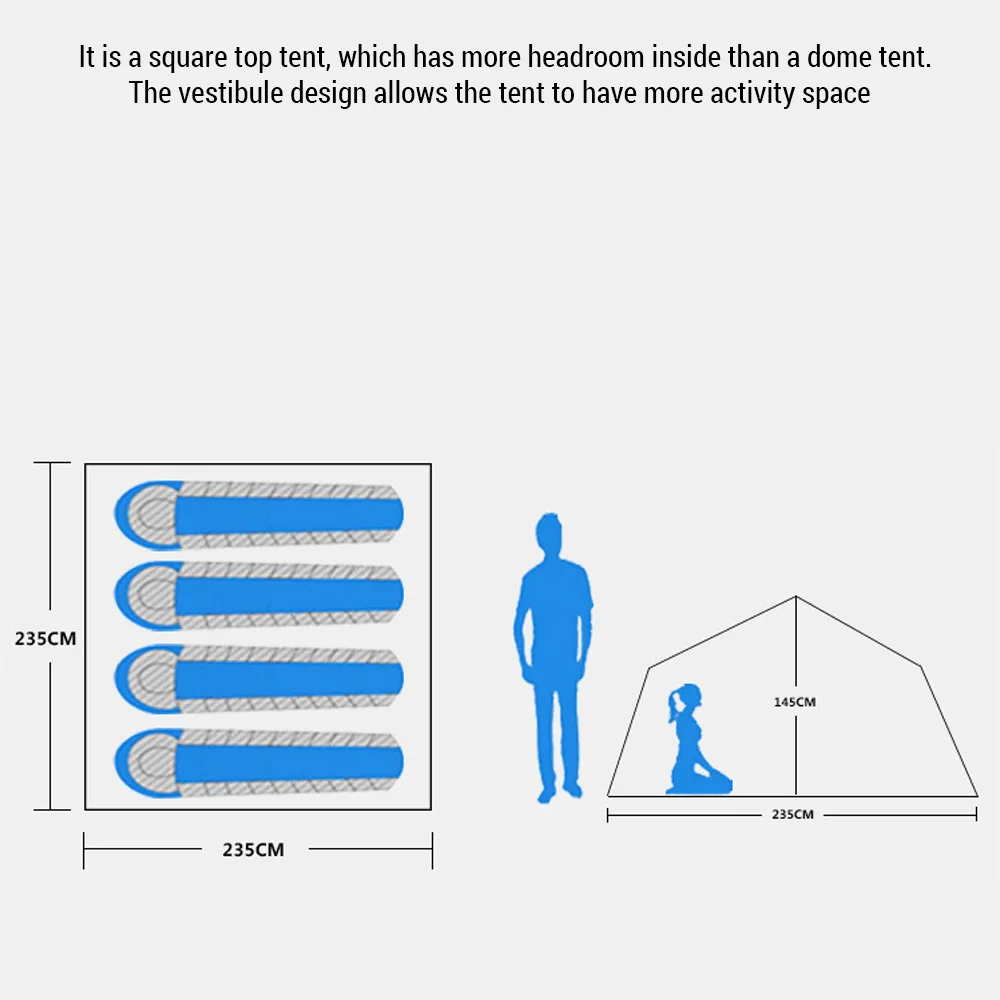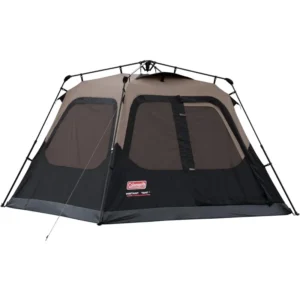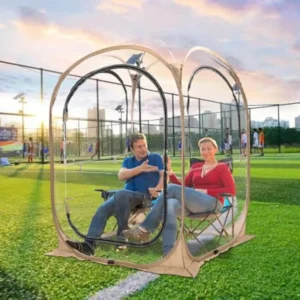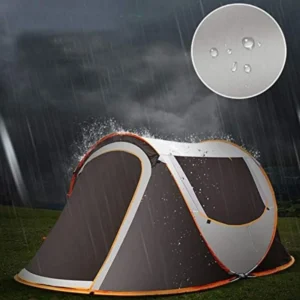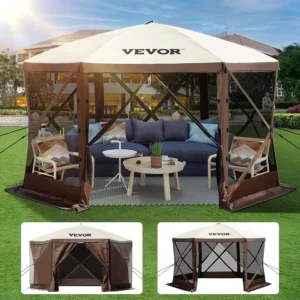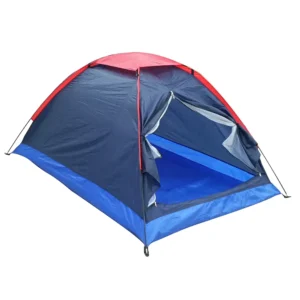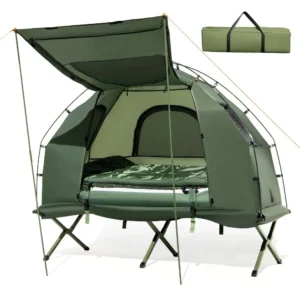Why Quick-Setup Tents Have Revolutionized Modern Camping
Quick-setup tents represent one of the most significant innovations in modern camping gear, fundamentally changing how outdoor enthusiasts approach their adventures. These innovative shelters feature specialized mechanisms that dramatically reduce setup time from the traditional 10-20 minutes to just 1-3 minutes—sometimes even seconds.
The core appeal is simple: less time struggling with tent poles and instructions means more time actually enjoying the outdoors. This shift away from complex assembly has removed one of camping’s most common frustrations, making outdoor experiences more accessible to everyone from families to solo adventurers.
Over the past decade, the camping equipment market has seen an explosion in quick-setup designs, moving them from novelty items to mainstream options. This evolution addresses common pain points many campers face—arriving at camp after dark, setting up in rain, or managing tent assembly while supervising children.
Today’s quick-setup tents vary widely in design approach, features, and quality. Understanding the important elements that separate exceptional models from mediocre ones helps ensure your investment delivers the convenience and protection you expect. Throughout this guide, we’ll examine the critical features that make a quick-setup tent worth considering for your next outdoor adventure.
Understanding different shelter options for two campers is essential before investing in any tent system. For those new to this category, learning about what defines a quick-pitch tent provides valuable context for the discussions that follow.
The Fundamental Appeal: When Time and Simplicity Matter Most
The growing popularity of quick-setup tents stems from their ability to address specific pain points that traditional tents often create. The psychological benefit of eliminating setup frustration cannot be overstated—it transforms the arrival experience from one of potential stress to one of immediate enjoyment.
Quick-setup tents provide maximum value in several key scenarios:
- Late arrivals at campsites when daylight is limited
- Camping with young children who require constant supervision
- Locations with unpredictable or rapidly changing weather conditions
- Frequent moves between multiple campsites during a single trip
- Festival camping where space is tight and setup areas congested
- Teaching camping skills to beginners without overwhelming them
These tents particularly benefit families with young children, older campers who find traditional setup physically challenging, and frequent campers who value efficiency. Even experienced outdoors people appreciate the convenience of quick-setup designs when conditions aren’t ideal.
The rise of fast-setup tent technologies has created diverse options to meet different camping styles and preferences. Modern instant camping tents now offer convenience without necessarily sacrificing the other features that make for an enjoyable camping experience.
Setup Mechanisms: Understanding the Technology Behind Quick Deployment
The technology behind quick-setup tents varies significantly across different designs, each offering distinct advantages and potential limitations. Understanding these mechanisms helps you select the option best suited to your specific needs.
Pop-Up Designs
True pop-up tents feature pre-tensioned, flexible frames that spring into shape when removed from their carrying case. These provide the fastest setup—often just seconds—but typically offer less stability in wind and can be challenging to fold back into their compact carrying position.
Hub Systems
Hub-based designs use a central connector point where multiple poles meet. This approach allows the entire frame to expand simultaneously when set up and collapse compactly for storage. These typically take 1-3 minutes to set up and offer better stability than pure pop-ups.
Pre-Attached Pole Systems
These tents feature permanently attached poles that unfold with the tent body. Setup involves extending the poles until they lock into position. This design balances quick assembly (typically 2-4 minutes) with improved stability and durability compared to simpler pop-ups.
Telescopic Pole Designs
Using extendable poles similar to camera tripods, these tents deploy when the telescoping sections are extended and locked. This method provides excellent stability and wind resistance while maintaining relatively fast setup times of 3-5 minutes.
Each mechanism presents different considerations for durability and repair. Pop-up frames may suffer from metal fatigue over time, while hub systems have more potential failure points but are often easier to repair or replace individual components.
For detailed guidance on the mechanics behind different designs, exploring tent assembly methods can provide valuable insights. The variety of easy-setup camping tent options demonstrates how different mechanisms suit different camping styles.
Capacity and Livable Space: Beyond Basic Person Ratings
When evaluating quick-setup tents, understanding the real-world capacity versus manufacturer ratings is essential for comfort. Most experienced campers follow a simple rule: for comfortable space, subtract one person from the manufacturer’s rating (a “4-person” tent comfortably fits three adults).
Key space measurements to consider include:
- Floor dimensions and shape (rectangular offers more usable space than tapered designs)
- Peak height (affects ability to sit up or stand)
- Wall steepness (vertical walls create more usable interior volume than steeply sloped walls)
- Floor area per person (20-25 square feet per adult for comfort)
Vestibules and awnings significantly enhance usable space without increasing the tent’s footprint. These covered external areas provide valuable storage for gear, footwear, and cooking equipment, keeping the main living area uncluttered.
Interior organization features maximize limited space through:
– Mesh storage pockets for keeping essentials accessible
– Gear lofts for overhead storage
– Built-in clotheslines or attachment loops for hanging items
– Divider curtains for privacy in larger models
For couples camping, understanding what size tent works best for 2 people helps prevent choosing a model that’s either cramped or unnecessarily large. Learning about tent vestibule design can help you appreciate how these extensions improve livability without increasing setup complexity.
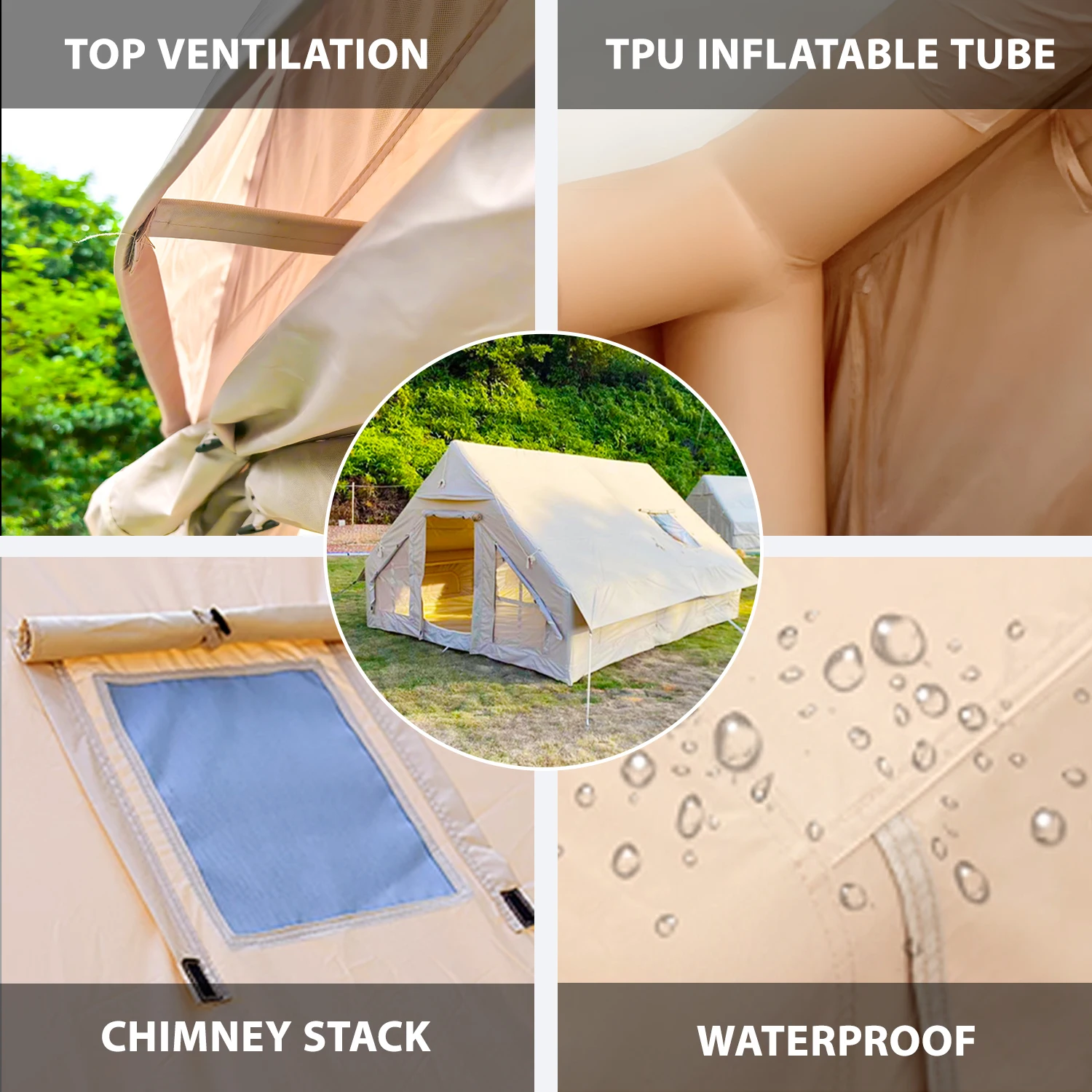
Weather Protection: Essential Features for Staying Dry and Secure
A quick-setup tent’s weather protection capabilities determine whether your camping experience remains pleasant despite challenging conditions. Understanding key protection features helps you select a model appropriate for your expected environment.
Waterproofing
Fabric waterproofing is measured by hydrostatic head ratings, indicating how much water pressure the material can withstand before leaking:
– 1000-1500mm: Adequate for light rain and brief showers
– 2000-3000mm: Suitable for moderate, sustained rainfall
– 3000mm+: Provides protection during heavy, prolonged storms
Full-coverage rainflies offer superior protection compared to partial coverage options. Look for rainflies that extend fully to the ground rather than stopping midway down the tent walls.
Seam Protection
Properly sealed seams prevent water from penetrating at stitch points. Quality tents feature:
– Factory-taped seams with waterproof tape covering stitch holes
– Inverted seam construction that places stitching inside rather than exposed
– Welded floor seams that eliminate needle holes entirely in critical areas
Wind Resistance
Quick-setup tents face unique wind challenges due to their pole structures. Look for:
– Lower, more aerodynamic profiles that shed wind effectively
– Multiple guy-out points with reflective guylines for nighttime visibility
– Reinforced pole attachments that prevent failure under stress
– Frame designs that allow some flex without collapsing
Most quick-setup tents are designed as 3-season shelters, suitable for spring through fall conditions but not heavy snow loading or extreme weather. Understanding tent waterproof ratings helps you match protection levels to your expected conditions. For reliable protection in varying weather, consider our selection of waterproof pop-up tents.
Material Quality and Construction: Evaluating Durability and Longevity
The materials and construction methods used in quick-setup tents significantly impact their durability and lifespan. Knowing what to look for helps you identify models that will withstand regular use over multiple seasons.
Tent Fabrics
Common tent fabrics include:
- Polyester: Offers good UV resistance, minimal stretching when wet, and reasonable durability at a moderate price point. Look for ripstop weave patterns that prevent tears from spreading.
- Nylon: Typically lighter and more packable than polyester but more prone to UV degradation and stretching when wet. Higher-end models often use silicon-impregnated nylon (silnylon) for improved waterproofing.
Fabric thickness is indicated by denier (D) ratings:
– 40-68D: Lightweight but requires careful handling
– 70-150D: Good balance of durability and weight for most camping
– 150D+: Heavy-duty fabrics for models prioritizing longevity over portability
Pole Materials
Pole materials directly affect durability, weight, and performance:
– Fiberglass: Common in budget-friendly models; heavier but cost-effective
– Aluminum alloy: Lighter weight with better durability and flexibility; found in mid-range to premium tents
– Steel: Heaviest but extremely strong; used in larger family models or where maximum stability is essential
Construction Details
Quality indicators in construction include:
– Reinforced stress points at corners and pole attachment points
– Double-stitched seams with additional reinforcement in high-stress areas
– Heavy-duty zippers with storm flaps to protect from water intrusion
– Bathtub floors that extend fabric up the tent sides, preventing seepage
The floor material often requires heavier fabric than the walls since it contacts rough ground. Look for floors with 1.5-2 times the denier rating of the walls for appropriate durability.
For examples of different construction approaches, our pop-up dome tent collection showcases various material and design combinations.
Ventilation Systems: Managing Airflow and Preventing Condensation
Proper ventilation prevents the uncomfortable and potentially damaging effects of condensation inside your tent. This issue occurs when warm, moist air from breathing or wet gear contacts cooler tent surfaces, creating water droplets that can make everything inside feel damp.
Effective ventilation systems include:
- High/low venting pairs that create natural convection airflow
- Mesh panels that allow air exchange while keeping insects out
- Adjustable vents that can be opened or closed depending on conditions
- Vestibule designs that promote airflow even during rain
Cross-ventilation principles suggest having openings on opposite sides of the tent to allow air to flow through rather than stagnate. This becomes particularly important in quick-setup tents where the integrated design sometimes limits customization of ventilation.
The relationship between weather protection and ventilation requires careful balance—more waterproof fabrics typically reduce breathability, making mechanical ventilation even more important. Look for models that maintain adequate airflow even when the rainfly is fully deployed.
Quality quick-setup tents incorporate ventilation systems that work automatically rather than requiring constant adjustment, allowing you to stay comfortable without micromanaging your shelter throughout changing conditions.
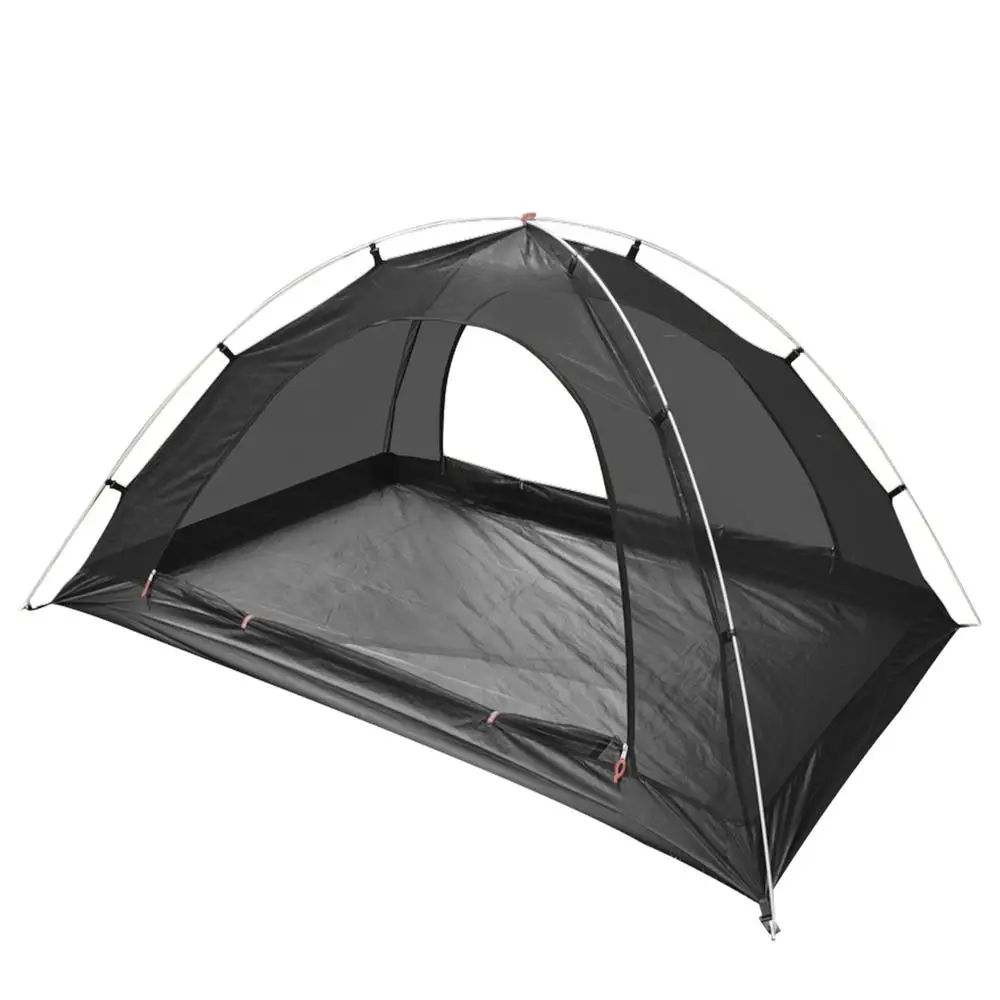
Portability and Packed Size: Transportation Considerations
Quick-setup tents typically trade some portability for their convenience, resulting in packed dimensions and weights that differ from traditional designs. Understanding these differences helps set appropriate expectations for transportation and storage.
Most quick-setup tents pack into circular or short, thick packages rather than the long, cylindrical shape of conventional tents. This can make them more challenging to attach to backpacks or fit into narrow storage spaces, though they often take up less length.
Weight considerations vary by design approach:
– True pop-up tents: Typically 2-5 pounds for small models, making them reasonably portable
– Hub-system tents: Mid-range weight, usually 5-10 pounds depending on size
– Cabin-style quick-setup tents: Heavier at 10-25+ pounds, primarily designed for car camping
Carry bag quality significantly affects transportation ease. Look for:
– Compression straps that secure the packed tent
– Multiple handles positioned for balanced carrying
– Durable fabric that resists tearing at stress points
– Wide-mouth openings that simplify packing
Quick-setup tents are generally best suited for situations where you can transport gear by vehicle to near your campsite, though smaller models can work for short-distance hiking. For those planning to carry their shelter longer distances, knowing proper tent packing techniques helps maximize portability.
Added Convenience Features: Details That Enhance Comfort and Organization
The thoughtful inclusion of convenience features can significantly improve your camping experience. These details often distinguish premium quick-setup tents from basic models.
Interior Organization
- Mesh storage pockets at various heights for easy access to essentials
- Gear lofts that create overhead storage for flat items like clothing
- Lantern hooks or loops at the tent ceiling for lighting
- Media pockets with clear faces for using electronic devices
- Built-in clotheslines for drying damp items
Electrical Access
- Protected cable ports for running power into the tent
- Internal routing channels that keep cords organized
- Reinforced ports that prevent tearing when used
Visibility and Safety
- Reflective guy lines and tent trim for nighttime visibility
- Glow-in-the-dark zipper pulls for easy entry/exit after dark
- Bright, contrasting colors on stakes and guy lines to prevent tripping
Doorway Design
- D-shaped or curved doors that open wide for easy entry
- Two-way zippers for ventilation options
- Magnetic closures that provide quick access while keeping insects out
These seemingly small details can make a significant difference in day-to-day use, particularly during extended camping trips. Our collection of 2-person pop-up tents showcases various convenience features that enhance the camping experience.
Easy Setup Camping Tent, Instant Camping Tent
Instant Cabin Tent Double Layer Canvas 1-Minute Setup Spacious Family Camping Shelter with Air Vents$308.10 Select options This product has multiple variants. The options may be chosen on the product pagePop Up Dome Tent, Waterproof Pop Up Tent
$218.89 Select options This product has multiple variants. The options may be chosen on the product page- $633.01 Select options This product has multiple variants. The options may be chosen on the product page
Easy Setup Camping Tent, Trekking Pole Backpacking Tent
$142.40 Select options This product has multiple variants. The options may be chosen on the product pageEasy Setup Camping Tent, Waterproof Camping Tent
All-in-One Elevated 1-Person Camping Tent Cot with Integrated Sleeping System for Outdoor Adventures$535.16 Select options This product has multiple variants. The options may be chosen on the product page
Balancing Trade-offs: Understanding the Pros and Cons of Quick-Setup Designs
Quick-setup tents offer distinct advantages but come with inherent limitations. Understanding these trade-offs helps determine if they align with your specific camping needs.
Advantages
- Dramatically reduced setup time (1-3 minutes vs. 10-20 minutes)
- Simplified process requiring minimal technical knowledge
- Reduced frustration, especially in challenging conditions
- Often more intuitive design with fewer separate pieces to manage
- Ideal for frequent setup/takedown during multi-site trips
Limitations
- Generally heavier and bulkier when packed than traditional tents
- More complex repair if components fail (especially integrated pole systems)
- Typically higher cost for comparable space and features
- Often less adaptable to extreme conditions
- Usually limited to 3-season use rather than 4-season capability
The best choice depends on your specific priorities. Quick-setup tents excel for weekend camping, family trips, festivals, and situations where convenience outweighs absolute portability. Traditional tents might remain better options for backpacking, extreme weather conditions, or when minimizing weight and packed size is essential.
External reviews from outdoor publications provide additional perspective on real-world performance across different models and conditions, helping validate manufacturer claims and identify potential concerns.
Matching Features to Your Camping Style: Decision Guidance
Different camping styles demand different features in a quick-setup tent. Use these priority guidelines to focus on what matters most for your specific needs.
Family Camping
- Larger interior space with room dividers for privacy
- Multiple doors to prevent disturbing sleeping children
- Extensive storage pockets for organizing gear
- Blackout fabric options to prevent early morning wakeups
- Generous vestibules for storing outdoor equipment
Festival and Event Camping
- Highly visible colors or designs for locating your tent easily
- Compact packed size for transportation on public transit
- Superior ventilation for potentially hot, crowded conditions
- Robust materials that withstand high-traffic environments
- Simple setup that works in limited space
Weekend Getaways
- Balance of setup speed and comfort features
- Sufficient weather protection for varying conditions
- Reasonable packed size for car transport
- Organization features that maximize limited space
- Quality construction for frequent use
Extended Camping Trips
- Durability that withstands prolonged use
- Advanced weather protection features
- Multiple ventilation options for adapting to conditions
- Spacious design with standing height (for larger models)
- Extensive organization features for living comfortably
For couples seeking the right balance of space and portability, understanding approaches to selecting compact shelters can provide valuable insights for making appropriate choices.
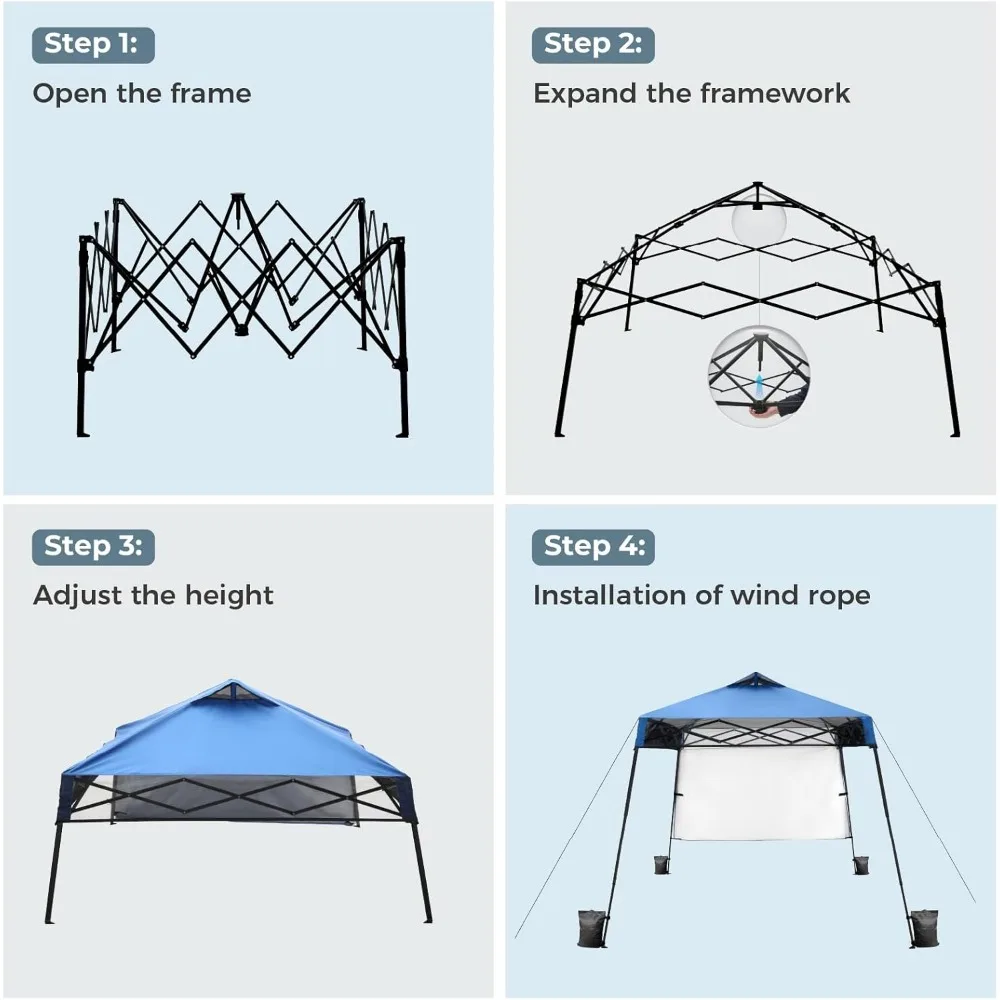
Expert Maintenance Tips: Maximizing the Lifespan of Your Quick-Setup Tent
Proper care significantly extends the lifespan of quick-setup tents, protecting your investment and ensuring reliable performance when you need it most.
Proper Deployment and Takedown
– Allow the tent to open at its own pace rather than forcing mechanisms
– Follow the manufacturer’s specific folding sequence for your model
– Practice at home before field use to prevent damage from incorrect techniqueCleaning and Storage
– Clean with gentle soap and water, never harsh chemicals
– Always store completely dry to prevent mold and fabric degradation
– Store loosely in a cool, dry place rather than tightly compressedField Maintenance
– Carry seam sealer for emergency repairs
– Use a ground cloth to protect the floor from punctures and abrasion
– Remove shoes before entering to prevent tracking in abrasive materialsMechanism Care
– Periodically inspect all joints and connection points
– Keep sand and dirt away from moving parts
– Apply silicone lubricant to zippers that become stiff
Quick-setup tents require special attention to their mechanisms, as these integrated systems can be more challenging to repair than traditional poles and sleeves. Treat deployment mechanisms gently, avoiding forcing components that seem stuck.
For those prioritizing weight along with setup convenience, our lightweight pop-up tent options demonstrate how proper care keeps minimalist designs functioning properly trip after trip.
Is a Quick-Setup Tent Right for You? Final Considerations
Before making your final decision, consider these questions to determine if a quick-setup tent truly matches your needs:
- How important is setup speed compared to absolute portability?
- Will you typically camp near your vehicle or need to carry your tent long distances?
- What weather conditions do you expect to encounter most frequently?
- How much interior space do you need for comfort versus convenience?
- Do you prioritize longevity and durability or initial cost and simplicity?
Quick-setup tents offer the greatest value for campers who:
– Camp frequently but for shorter durations
– Often arrive at their destination after dark or tired from travel
– Appreciate convenience and reduced complexity
– Primarily engage in car camping rather than backcountry exploration
– Need to manage setup while supervising children or handling other tasks
For those who regularly backpack long distances, camp in extreme conditions, or need to absolutely minimize packed size and weight, traditional tent designs might still offer advantages despite their more involved setup.
The right choice ultimately depends on your specific combination of camping style, environmental conditions, and personal preferences. By understanding the essential features outlined in this guide, you’re well-equipped to select a quick-setup tent that provides the perfect balance of convenience, protection, and durability for your outdoor adventures.

